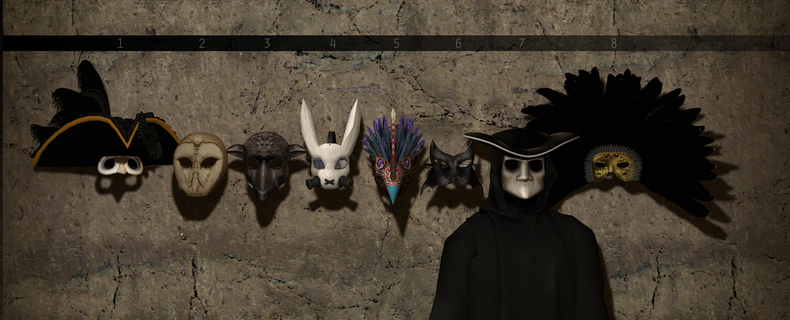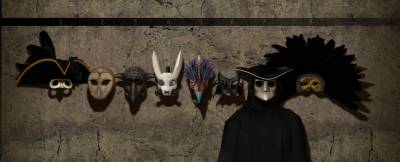
- 05.07.2014
- 2443 Просмотра
- Обсудить
Freemasons reportedly have a number of secret handshakes that they employ when meeting fellow travelers. Thumbs are pressed against knuckles or wrists in various permutations depending on the greeters' position within the society. Members of the Illuminati might be seen declaring their affiliation with hand signals that make them look suspiciously like classic rock fans. The Karstphanomen (the secret society in my new book, The Devil's Workshop) whisper Latin phrases to one another, conveying their mutual agreement that the "end justifies the means."
But beyond all the special handshakes and code words, there doesn't seem to have been much point to most secret societies other than self-interest. Once an invitation was secured, membership in one of these societies guaranteed a person certain considerations: political favors, appointments to influential positions, business and financial opportunities. Some societies with a more religious (or perhaps sacrilegious) bent believed they could gain mystical abilities or accrue occult powers and artifacts.
Secret societies still exist today, but the advent of the Internet has made real secrets much harder to keep. Masons ride in parades and the Karstphanomen now work out in the open with lawyers and public advocates. Only Anonymous, the tech-savvy Internet entity has captured the popular imagination in the same way that secret societies once did. But even they don't fully follow the tradition of selfishness, since they seem to want to entertain us while dragging others' secrets out into the open.
Children still make tree houses and ice forts with signs that read "keep out" and "no girls allowed." Exclusivity abounds. Secret societies may be a relic of a bygone time, but they still have the power to intrigue us. These lucky seven are thought by some to have some vestige of influence even now...
Freemasons
The Freemasons are the longest-lasting secret society (that the general population is aware of) still in existence. They've become synonymous with secret handshakes, bizarre rituals and a hierarchy in which members move up through various levels as they gain experience and respect within the society. Originally formed by the union of several smaller societies, the first "lodge" was founded in London in 1717, but at that time rumors of the Masons' existence had already been circulating for at least a century. Most modern secret societies take their cue from the Freemasons by incorporating handshakes, code words, private rituals and complex chains of command.
Illuminati
Although the Illuminati originally branched off from, and broke away from, the Freemasons, they have since become a prime focus for conspiracy theorists, many of whom credit Illuminati agendas for every conceivable disaster, mystery, and economic downturn. In point of fact, there is no evidence that the Illuminati still exist, but that only seems to add to their mystique.
The Skull and Bones
Perhaps the least secret of all secret societies, the Skull and Bones Society at Yale University was founded by William H Russell in 1832. Originally called the Eulogian Club, the Skull and Bones boasts many prominent heads of state (including at least three presidents), captains of industry, and heads of covert agencies among its membership. The society meets twice a week for rituals that are purported to closely follow Masonic rites, but many claim the organization is really nothing more than a glorified college fraternity.
The Rosicrucians
Founded in the early fifteenth century by Christian Rosenkreutz, the Rosicrucians were purported to be using occult practices to bring about a global transformation. Two centuries later, the publication of three manifestos launched them into the popular consciousness. They are believed by discerning conspiracy theorists to have founded the Freemasons, the Illuminati, and the Invisible College, and to have been the guiding force behind every significant revolution in modern history.
Bilderberg
In 1954, the world's most influential movers and shakers met in a hotel to discuss and plan the coming year's global agenda. They have continued to meet every year, but the content of their talks has remained a zealously guarded secret. They are not technically a secret society, since their existence and membership are not in question, but many conspiracy theorists worry about the influence and reach of their annual meetings.
The Elders of Zion
In 1920, a newspaper owned by industrialist Henry Ford ran a series of articles reprinting a Russian document called the Protocols of the Elders of Zion. The document was quickly debunked as a hoax, but those articles were collected as a book, newly titled The International Jew: The World's Foremost Problem. Adolph Hitler read the book, was influenced by it, and appropriated many of its ideas for himself. Anti-Semitic theorists around the world still believe that the Protocols were genuine and that there was once a Jewish conspiracy to achieve world domination.
The Knights Templar
Early in the twelfth century, nine knights took a vow to protect pilgrims traveling through the Holy Land. More knights joined the cause and the organization grew, gathering wealth, fame and power as their influence spread. Popular culture has cast them in the role of funders of many other secret societies and guardians of the most sacred Christian treasures. But the members of the Knights Templar were eventually tortured and executed, and the society was disbanded. There is no compelling evidence that they ever possessed the Ark of the Covenant, the Holy Grail or the blood of Jesus Christ.
Alex Grecian
Будь-те первым, поделитесь мнением с остальными.


